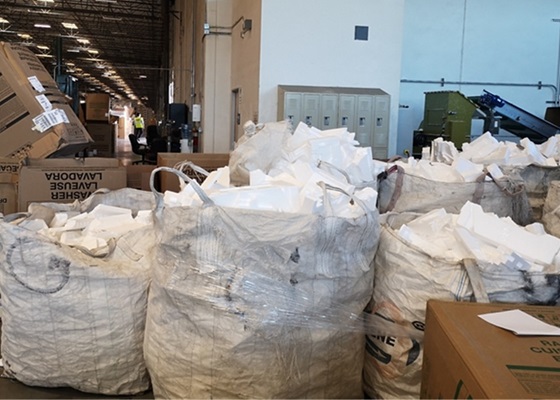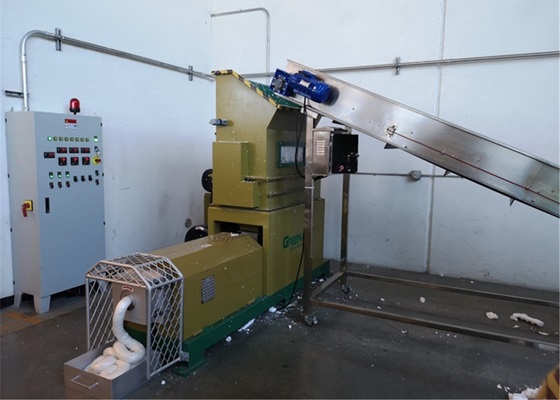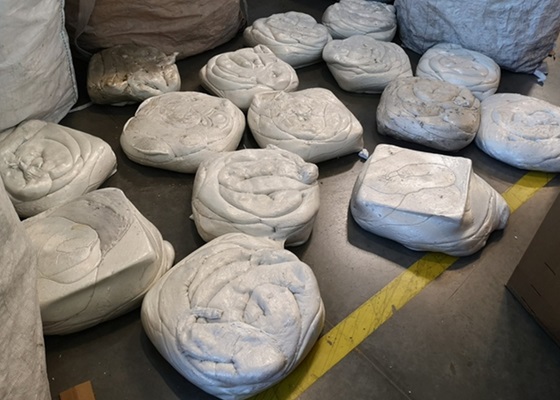Styrofoam Recycling Brings New Life to Foam Materials
Researchers from the University of Delaware and Argonne National Laboratory introduced a chemical experiment to convert EPS into PEDOT:PSS, which is a high-value conductive polymer used in electronics, successfully turning Styrofoam into a valuable resource. The study demonstrated how Styrofoam waste can be integrated into functional electronic devices, such as silicon-based hybrid solar cells and organic electrochemical transistors, realizing Styrofoam recycling.
Converting EPS into a valuable resource
After months of trial and error, the research team found a solution that successfully sulfonated EPS with minimal defects and high efficiency. This Styrofoam recycling method also enables the efficient processing of foam waste materials into PEDOT:PSS.
In addition to contributing to the sustainability of packaging waste and the practicality of Styrofoam recycling solutions, this research also means that you can make electronic materials from Styrofoam waste whose performance is just as good as those on the market.

Are there other ways to perform Styrofoam recycling?
Actually, in addition to the way of achieving Styrofoam recycling through this chemical reaction, there are also chemical recycling and mechanical recycling methods.
Foam can be broken down into its polymer components through a process called pyrolysis for chemical recycling. Pyrolysis involves heating foam under a vacuum to break it down into its basic components, such as oil and carbon char. These by-products can be used as fuel or raw materials in various industries and are one of the sustainable Styrofoam recycling solutions.
Mechanical recycling is carried out by compressing the foam waste material into dense blocks and melting them to form pellets. The resulting compacted blocks or pellets can be used to produce new products or molded into different shapes. Foam usually needs to be compacted by a foam densifier before Styrofoam recycling to minimize the volume when transported to the recycling facility.

Key advantages of the Foam densifier compared to other machines
There are many foam recycling machines on the market, such as cold-press compactor, and hydraulic-press compactor, but foam densifier has won the favor of many consumers with its high compression ratio and intelligent operation.
Foam densifier compacts foam to one-ninetieth of its original volume through the hot melt principle, while the compression ratios of cold-press compactor and hydraulic-press compactor are 50:1 and 70:1 respectively. Obviously, foam densifier can maximize the efficiency of transportation and space management.
This foam recycling machine can be used for Styrofoam recycling with a start/stop button simply. Even a temporary worker without any machine knowledge can quickly get started. Additionally, foam densifier is highly automated, and only one staff member is needed to complete the feeding and unloading work and smoothly carry out Styrofoam recycling.
Most importantly, the hot melt ingots produced by foam densifier can not only reduce transportation costs, but also significantly improve the granulation efficiency in subsequent Styrofoam recycling. The pelletizing capacity of the cold-press compactor is much lower than the basic capacity of the pelletizer. The density of hot melt ingots is generally 600-800kg/m3, and the density of compressed material produced by cold-press technology is 100-300kg/m3. Therefore, downstream buyers generally tend to buy hot melt ingots.

Advances in recycling technology are improving the efficiency and cost-effectiveness of recycled foam processing. INTCO Recycling, as a leader in Styrofoam recycling solutions, has been deeply involved in this industry. If you have any needs, we are always here to help you.
